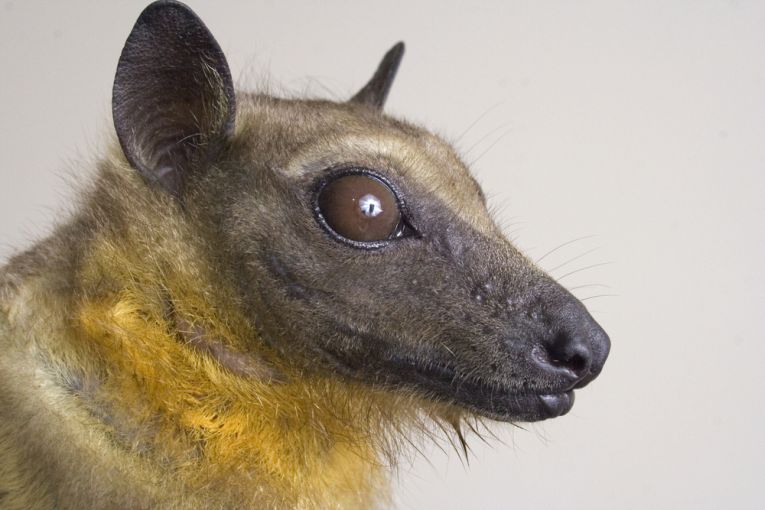Air moves as winds are derived from the heating of the land and other minor sources that cause variability and crosswinds. Large bats are capable of compensating for these effects of wind and can also carry small sensors that we can use to investigate both bat response and the wind vector. This paper studies how bats change their flight in response to wind direction using sensors for the first time, in Commuting fruit bats beneficially modulate their flight in relation to wind.
Near Accra, the straw-coloured fruit bat, Eidolon helvum is a mega-bat that forms colonies and was investigated by Nir Sapir and fellow researchers from the German Max Planck Institute for Ornithology and several other institutions. Several larger males (with mass between 255-321g) were fitted with GPS data loggers then rewarded with bananas. Every 5 minutes (or every 2.5 minutes for 2 individuals) during the bats' daily commute, signals were received relaying vertical and horizontal position. The commute took a standard 30 minutes as the bats flew NNW to fruiting trees and then returned, with only one bat switching his feeding site for one night.
Wind conditions remained fairly constant, luckily for the bats. The commute is a vital activity for the animals, so advanced navigation is likely to be employed when necessary. Direct flights are always preferred, determining modulation of air speed so that they arrive quickly at the correct feeding spot. The bats overcompensated for wind drift when they began flying and drifted slightly when they reached their destination. Tailwind assistance probably occurred ether on the outward journey or the inward.
Surprisingly, bees, butterflies and dragonflies react in similar fashion to a tailwind. The crosswinds created different reactions, with powerful compensation available for the bats and most birds. The bat ground speed however remained constant. This may help them to determine when they reach their feeding site. Basically all such aerial animals minimise their energy costs by adapting to cross and tail winds in parallel, but depending on their flight performance.
High tech solutions to studying free-flying animals are now available to research, with vast improvements in mass and performance soon available. The ecology of animal movement may become a better-documented area as computer modelling is brought in to supplement atmospheric and other measurements, as in this case.










